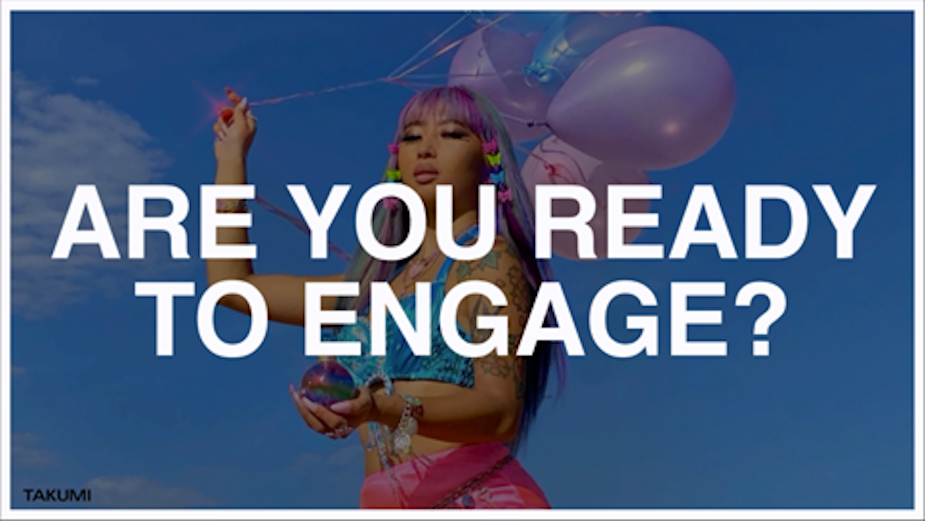
Diversity & Inclusion: Uncomfortable Conversations, Better Answers

The Influencer Marketing Show Global returned for 2021 with a three-day digital conference, showcasing insights and innovation from industry experts across 60 thought-provoking sessions. TAKUMI chief strategy officer, Jim Meadows, rounded off day two with a thoughtful and illuminating session about Diversity and Inclusion.
The session, ‘Uncomfortable Conversations, Better Answers’, focused on ways that brands and agencies can elevate their D&I efforts, with one overarching strategy: engaging in uncomfortable conversations.
Here’s the rundown on Jim’s IMS insights:
The issue at hand:
“Throughout 2020 we saw frustration, we saw protests… we saw the world bleed. Not just because of Covid, but because there are so many groups within our society that felt like they’d lost a voice and that society had stopped respecting them as citizens”.
Amidst the global pandemic- which has hit BAME communities the hardest- various events throughout the past year gave added exposure to long-standing, institutionalised inequalities present across the world. Minority groups are tired of being marginalised, and it’s up to society as a whole to step-up. At IMS, Jim expressed how these groups are looking for brands “that help them find their voice, to be represented, to be spoken to and to be understood”.
The marketing and advertising space is one that has struggled with underrepresentation for too long. As marketeers, it’s up to us to ensure that we are providing a platform for voices to be heard, and that a diverse range of voices and lived experiences are reflected in what we put back out into the world.
Jim acknowledged that brands are beginning to step up; “the amount of RFP’s that reference D&I is phenomenal. It’s a great first step, that we are acknowledging that advertising has to change. It has to be more accommodating, more diverse…”. However, all too familiar to Jim are the RFP’s that briefly and vaguely mention, somewhere at the bottom, that ‘diversity is important to our brand and it needs to be reflected in the campaign’. This recognises a commitment to D&I, but pushes it to the background as a matter of low-priority.
Brands need to ask themselves- how are we trying to connect with these audiences? What actions are we going to take to achieve that connection? How can our campaign reflect the value we place on diversity and inclusion?
The solution:
Put simply, to gain understanding we have to listen- “We have to be willing to hear uncomfortable truths. We have to try and empathise with people that have got completely different experiences than our own”.
This all amounts to one thing: having uncomfortable conversations: “It’s by having these conversations that we learn so much and we allow ourselves to grow”.
Step 1: Your People.
A good place to begin is by reviewing your values and commitments- do your values speak to diversity and inclusion? For brands and agencies alike, the conversation has to start at home by nurturing a diverse workplace. Using TAKUMI as an example, Jim spoke of our hiring strategy that has been rewritten “to ensure that we hire people that share our values, but with different life experiences…. A better, representative group of people”. It also means having ongoing discussions with those people, to establish how they are demonstrating and achieving diversity and inclusion in their work.

Step 2: Impactful conversations.
At TAKUMI, this has been followed up with the creation of an independent ethics committee- comprising of creators as well as experts in law, mental health and academia- “to ensure that our ethics are at the heart of everything we do and don’t just sit on a page of policy, but that they are actioned throughout the business”.
As marketeers, it’s our responsibility to ensure that we provide an environment for our clients and creators that allows them to determine whether their own values align with one another, in order to form authentic and value-driven partnerships. At IMS, Jim shared how TAKUMI is trying to nurture this environment, through our Creator Collectives.
“What’s a collective? A bespoke group of creators and brands, taking on brand challenges and helping to feed into tricky problems that we are facing as we start to open up our advertising to be more specific, and a truer representation of the citizens that live in today’s world.”
Our Collectives unite talented creators that represent a diverse spectrum of subcultures, voices and life-experiences, empowering them to tackle the issues they truly care about. Giving brands access to Collectives allows them insight into these issues from the unique perspective of the creator as an advocate for their audience, whom they know and engage with in an authentic and reactive way.
“All of this helps brands go from well-meaning to well-doing”.
Step 3: Measuring effectiveness.
“We very rarely point tools inwards to understand the people that we assume we know already, and the results can be surprising”.

Feedback and analysis is essential to measure whether you’re successfully achieving the things you set out to achieve. These methods could vary depending on your brand, but for TAKUMI it’s all about advanced social listening. We listen to consumer audiences in real-time, to gain opinions on what we are doing and how a brand is represented online. We listen to our creators and take on their feedback, so that brands can make informed decisions.
Jim explained how these measurements enable us to improve our content delivery, our recruitment and partnerships of creators and brands, and ultimately our approach to diversity and inclusion.
The key takeaway:
Jim reminded IMS attendees that diversity and inclusion shouldn’t be a symbolic concept to make a brand look good on paper. It is a true value which, when committed to, prioritised and actively strived for, benefits everyone. Of course, going from well-meaning to well-doing is certainly easier said than done, but the IMS session highlighted where your good intentions can take you if they’re met with a bit of strategy along the way.
Actions do speak louder than words, but when it comes to effectively actioning your D&I commitments… it all starts with a conversation.










